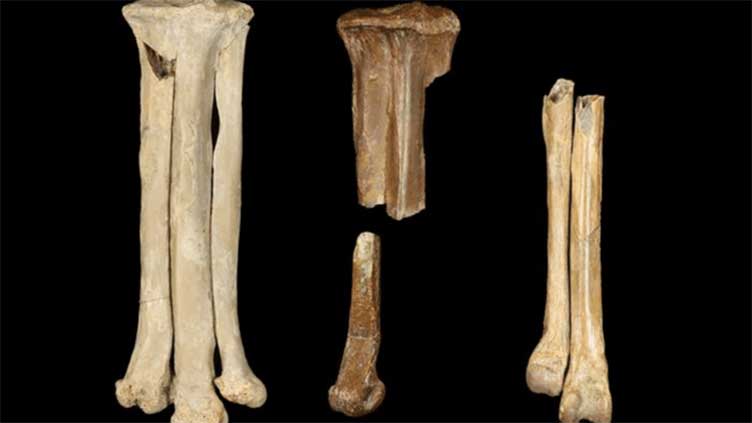68 million-year-old foot bones reveal two new hawk-like species

WeirdNews
Interestingly, these hawk-sized birds were capable of lifting small mammals and even baby dinosaurs
(Web Desk) - Interestingly, these hawk-sized birds were capable of lifting small mammals and even baby dinosaurs.
Roughly 68 million years ago, the Hell Creek Formation was a bustling ecosystem teeming with life, including iconic dinosaurs like Triceratops and Tyrannosaurus rex.
But these giant dinosaurs weren’t alone. Buried in the formation were fossilized remains of smaller, feathered creatures: birds.
Chicago’s Field Museum researchers have identified two new ancient predatory bird species from just foot bones. The two new species have been named: Avisaurus darwini (after Charles Darwin), and Magnusavis ekalakaenis (after the discovery town Ekalaka of Montana).
Interestingly, these hawk-sized birds were capable of lifting small mammals and even baby dinosaurs.
The discovery of these new ancient species through foot fossils is a significant achievement. This provides valuable insights into past avian populations.
These two new kinds of ancient birds were identified from just one bone each. The remains revealed that ancient birds could catch and carry prey — like a modern hawk or owl.
“With these foot bones, they’re rich in informative data. There’s a number of features that suggest raptorial behaviors,” Clarka a PhD student at the Field Museum and the University of Chicago, told IE.
“But to note, this isn’t that we’re calling them hawks or owls directly, but merely that morphologies of an important foot bone are shared among living birds of prey and now, these guys (the avisaurids),” the author added.
The fossils analyzed in the study were tarsometatarsi – a specific bone in the bird’s foot where the toes attach.
Despite their small size, these isolated bones proved to be a valuable source of information.
Clark explained that every detail on a bone, including bumps and ridges, can reveal information about muscle and tendon attachments. For instance, the researchers found a bump called a tubercle – a point of muscle attachment.
“When we see tubercles this large and this far down in modern birds, they’re in birds of prey like owls and hawks,” said Clark.
Interestingly, these are indicative of their ability to lift and carry heavy prey while maintaining aerodynamic efficiency. Moreover, the fossil ankle bones exhibit similar characteristics, suggesting that these ancient birds were predatory.
As per the press release, the birds belonged to enantiornithines, a group of ancient birds, which went extinct due to asteroid impact.


